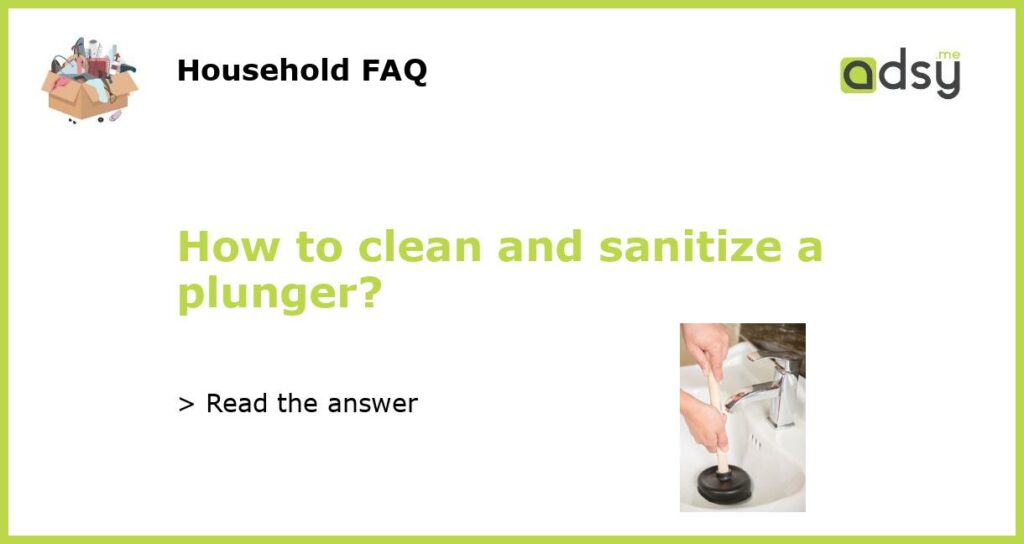Why cleaning and sanitizing a plunger is important
Using a plunger is one of the most common ways to unclog a toilet, but it can also be a breeding ground for bacteria and germs. That’s why it’s important to regularly clean and sanitize your plunger to avoid spreading harmful pathogens.
Steps to clean a plunger
The first step in cleaning your plunger is to put on a pair of rubber gloves to protect your hands from coming into contact with any bacteria or fecal matter that may be on the plunger. Next, rinse the plunger with hot water to remove any excess debris. Then, mix a solution of one part bleach to nine parts water and soak the plunger in the solution for at least 30 minutes. Rinse the plunger with hot water and allow it to air dry before storing it.
Alternatives to bleach
If you prefer not to use bleach, there are alternative cleaning options available. For example, you can replace the bleach solution with a mixture of vinegar and baking soda. After rinsing the plunger with hot water, pour ½ cup of baking soda into the toilet bowl, then add 1 cup of vinegar. Finally, place the plunger in the bowl and let it soak for 30 minutes before rinsing it with hot water and air drying it.
Tips for proper plunger storage
It’s important to store your plunger properly to prevent it from touching other surfaces and spreading bacteria. One option is to use a plunger storage container that keeps the plunger away from other objects. Alternatively, you can store the plunger in a plastic bag or a bucket with a lid to keep it isolated from other items.
When to replace your plunger
Even with proper cleaning and storage, there will come a time when you need to replace your plunger. Look for signs of wear and tear, such as cracks in the rubber or a broken handle. If your plunger has been used frequently, it’s a good idea to replace it after six months to a year.






